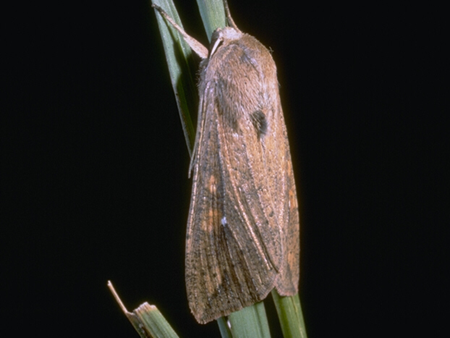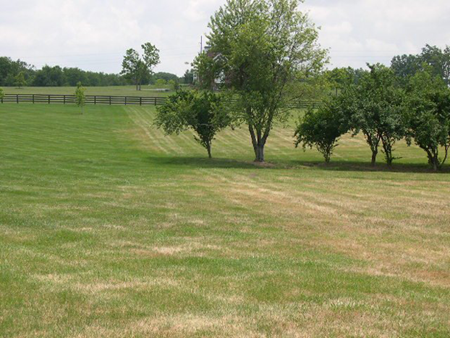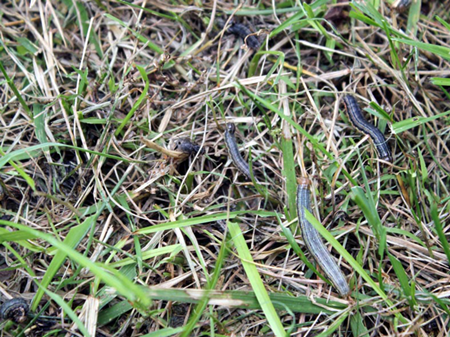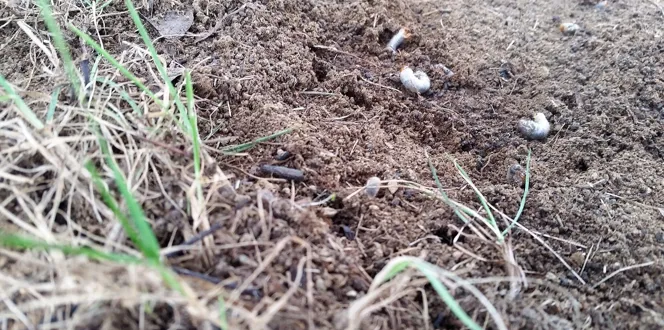You might not be able to hear the marching, but there are troops invading some yards across the U.S. this year in greater numbers than usual, and they’re after one thing: your lawn.
In fact, entomologists say they’ve never seen the problem this widespread. What are these tiny troops made of? Fall armyworms. Although called worms, they are actually caterpillars of a moth. They are infesting lawns along the Southeast, as well as stretching into areas as far west as Texas and as far north as Michigan.
The fall armyworm gets its name from its behavior of moving across fields in an army-like fashion, leaving dead grass in their wake.
Let’s learn more about this fleet of feeding pests and what you can do about them.
What Are Armyworms?

Fall armyworms usually infest lawns in southern and transition zone states, so their spread to new areas like the Midwest and Northeast might be linked to climate change, particularly a warming climate.
They also could have moved with a storm front that came from the south and stretched north, researchers say. They do this by hitching a ride on air currents and then dropping down and settling in where they land.
Early feeding damage looks like drought-stressed grass, but can quickly progress to complete browning if there are a lot of fall armyworms present.
You’re probably wondering what these hungry armyworm caterpillars look like. Their larvae are 1-inch to 1.5-inches long and dark greenish-brown to black with long, white, orange, and dark brown stripes along the abdomen. The adult moths have 1-inch long bodies with a 1.5-inch wingspan, a tan body and a tiny white spot centered on each front wing.
Fall Armyworm Life Cycle
Adult fall armyworms usually lay eggs on flat leaves of trees and flowers or even on patio furniture and light posts.
Each female can lay egg masses containing up to 500 eggs. Five to seven days later, the eggs hatch. Those armyworm larvae then begin munching their way through your lawn.
Signs of Armyworm Damage

Grass may be eaten down to the ground, creating brown patches. If you suspect armyworm damage, look for ragged holes on individual grass blades.
Another fall armyworm symptom includes a lacy or transparent effect on grass blades where they have chewed them.
New sod or newly seeded grass is like the main entree at a buffet for fall armyworms.
How to Get Rid of Armyworms in Lawn
First, if you’re in an area that is suspected to have fall armyworms, you can look for sticky egg masses to appear on buildings, patio sets, decor, plants, and other outdoor surfaces.
That’s when you can get ahead of fall armyworms, which is the best way to avoid their damage. Fall armyworm control in turf can happen with an application of a pyrethroid-based insecticide. Experts prefer liquid over granular applications since they work faster at controlling these speed-eating pests.
Will Grass Grow Back After Armyworms Damage?

If fall armyworms have come through and destroyed your lawn, you may be wondering if you can ever get it back to the thick, green stand it was before.
Luckily, most of the time fall armyworms feed on the upper portion of the grass plant, so the plant can recover on its own. Once the damage is done, your grass can bounce back if the plant crowns are protected from desiccation through supplemental irrigation.
Are Armyworms Harmful to Dogs?
When fall armyworms are dining on your grass, they don’t remain in dry areas. They seek succulent grass to eat, so they are always on the move.
But if, during this movement, your dog were to come across them, they aren’t known to contain any toxins so they won’t hurt your best furry friend.
Will Heavy Rain Kill Armyworms?
Unfortunately, large amounts of rain, like the country has been experiencing in many regions lately, could bring fall armyworm invasions with them instead of killing them.





